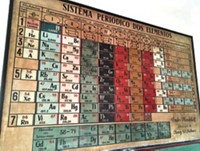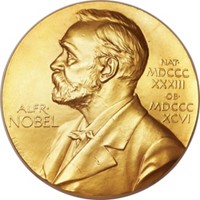Advertisement
Grab your lab coat. Let's get started
Welcome!
Welcome!
Create an account below to get 6 C&EN articles per month, receive newsletters and more - all free.
It seems this is your first time logging in online. Please enter the following information to continue.
As an ACS member you automatically get access to this site. All we need is few more details to create your reading experience.
Not you? Sign in with a different account.
Not you? Sign in with a different account.
ERROR 1
ERROR 1
ERROR 2
ERROR 2
ERROR 2
ERROR 2
ERROR 2
Password and Confirm password must match.
If you have an ACS member number, please enter it here so we can link this account to your membership. (optional)
ERROR 2
ACS values your privacy. By submitting your information, you are gaining access to C&EN and subscribing to our weekly newsletter. We use the information you provide to make your reading experience better, and we will never sell your data to third party members.
Education
Newscripts
by K. M. REESE
April 5, 2004
| A version of this story appeared in
Volume 82, Issue 14
Bill Floyd writes from a cyber-place named Yahoo that he recently went to a nanotechnology conference at a big hotel in Columbia, S.C. It was hosted in part by the USC NanoCenter on the campus of the University of South Carolina. To reveal the events in the various meeting rooms, Floyd says, the hotel staff had placed signs by the doors. "The sign on our room said 'Nanacenter.' Perhaps they expected a Grandmothers' Convention?"
It said here earlier that "when eyebrows are shaved off or plucked, they always grow back to their original length" (C&EN, March 15, page 56).
Now comes a clarification from correspondent Richard Allen of La Crescenta, Calif., who writes: “Yes and no. New ones do grow back to their original length. But the shorn ones continue growing to complete their cycle, resulting in stubble of varied length; the length of each bristle depends on when in the cycle the shearing took place. Thus an eyelash shorn when it was half grown will grow the second half. If one-fourth grown when shorn, it will continue to grow the remaining three-fourths length.”
Broccoli, the alleged edibility bane of little kids, gets a decent nutritional review in the March 23 New York Times. For nonspecialists, this vegetable is composed of green stalks and darker green florets. A reader wrote the Times to ask whether the stalks and florets are equally nutritious.
The Times cites Tracy Farrell of Cornell University, who says that broccoli's stalks and florets "are remarkably similar in nutrition," with one exception: The florets contain significantly more vitamin A than the stalks, perhaps eight times more. But most people eat a combination of stalks and florets, she says, "so the difference is evened out."Broccoli is also a good source of vitamin C, an antioxidant, and nutritional fiber, Farrell says, but they are fairly equally distributed through the plant.
The reports here about broccoli and eyebrows were cited originally in the New York Times over the byline of C. Claiborne Ray, who was referred to in Newscripts as "he." A letter has arrived from Rachel Dare, gender not specified, who says: "You may want to double-check your reference to C. Claiborne Ray as 'he.' "Some time ago, Dare goes on, she saw "an interesting article about 'her' in the Times. I suspect this is a common mistake."
Kohtaro Matsuo writes from osaka, Japan, that he saw in the March 10 Daily Asahi a report of a performance of Beethoven's Fifth Symphony by an orchestra conducted by a robot. The orchestra was the 70-member Tokyo Philharmonic; the robot, named QRIO, was developed by Sony.
The robot had been trained to recognize the tempo of the music as well as to use conducting gestures on stage. In the beginning, the Maestrobot (Matsuo's word) and orchestra were not in complete harmony, the Daily Asahi reported. After a few rehearsals, however, QRIO brought the orchestra under control to give an enjoyable performance.
Two days later, Matsuo says, both the Daily Asahi and Japanese TV news reported Toyota's successful public demonstration of its two robot buglers. They had played the theme of Walt Disney' "Pinocchio" and some other music. The robots make music by means of their fingers on the trumpets' pistons, their lungs (air pumps), and their diaphragm lips on the mouthpieces.
After the demonstration, a Toyota official said, "I do not claim the performance was great, but I would say they were not bad." Toyota invites the public to suggest nicknames for the robots.
Meanwhile, Matsuo writes, Honda Motors now has 26 ASIMOs, the robot that made its appearance in 2000. The company has made up to $1.3 million a year by renting them out for department store sales promotions and the like.






Join the conversation
Contact the reporter
Submit a Letter to the Editor for publication
Engage with us on Twitter